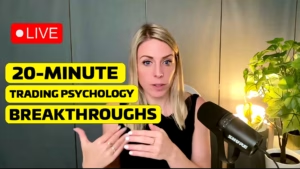#tradingpsychology #confidence #self-belief
Confidence in your trading ability is actually something you can train for. And it’s worth it – traders with higher confidence will be more likely to persist in the face of challenges and ultimately achieve their goals.
Don’t wait until you have had a run of red days to start working on your confidence and self-belief. Use these three simple tips to see an instant uplift in your trading confidence and your belief in your ability to hit your long-term trading goals.
Watch this video to find out:
👉 Why confidence is an asset for your trading
👉 How to stop feeling bad when you compare yourself to other traders
👉 3 practical actions you can take to build rock solid belief in your ability as a trader










